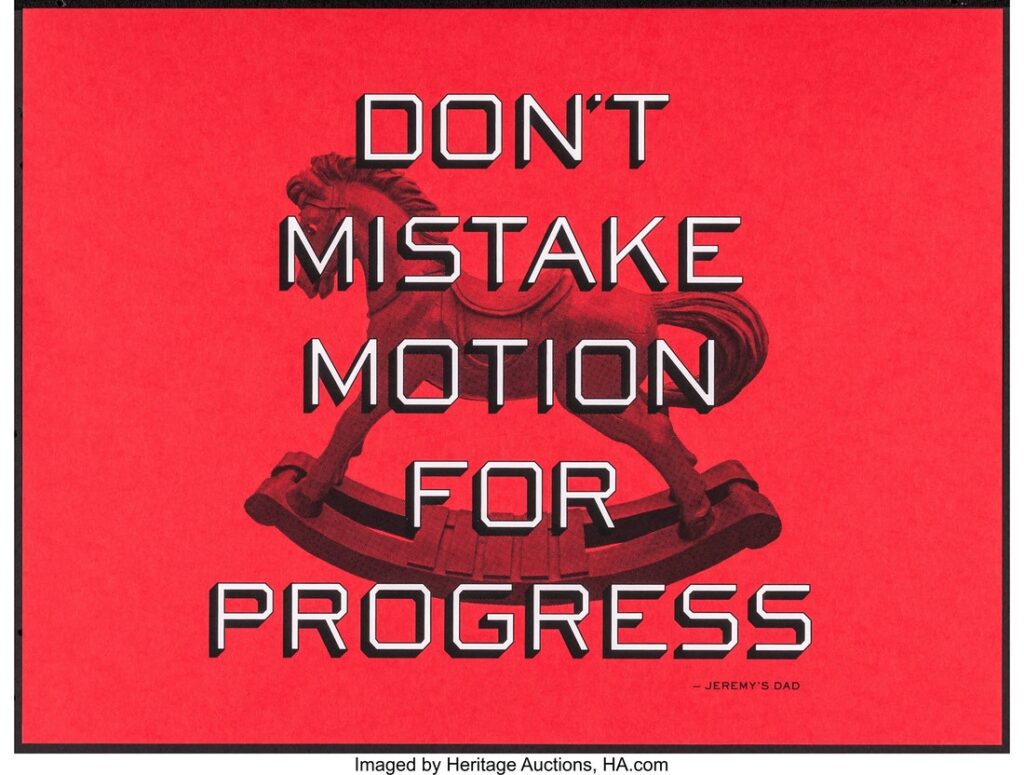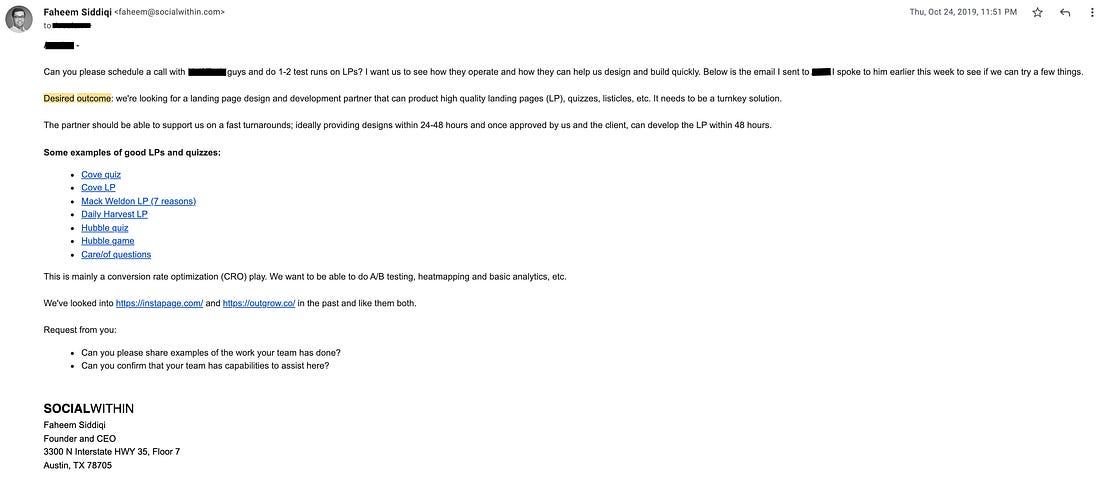
Many companies have a clock-in, clock-out culture. They wrestle with trying to move the needle by keeping people busy.
This is called theater work. Those long days, random meetings, Zoom calls with 10+ people in attendance but one person presenting… There’s no time left in the day for creative work. There’s no time in the day for impactful work.
At Facebook, we used to have a popular saying “Don’t Mistake Motion for Progress.”
Smart work > hard work.
This isn’t to say don’t work hard. But working for the sake of work alone can suppress creativity and minimize impact.
If time is money and money is designed to buy us more time, then people should optimize for quality work time.
So, how can companies build a high performance, high impact culture in less than 45 days?
- OKRs
- Identify and manage meeting costs metric
Objectives and Key Results (OKRs)
OKRs are the most effective way to do annual planning. Results-oriented companies work backwards. They work on annual plans but quickly work down to quarterly and monthly goals.
Every person has a number. Every employee is there to move the needle in some capacity. This is true regardless of the size of the organization, but especially at startups.
There’s countless documentation on how to set OKRs, how to work and rework them. Below are a few links that I’d recommend checking out if this is the first time you’re setting OKRs for your company.
In my experience, the hard part is to stick to OKRs. It requires discipline and constant reminders.
If you’re a leader in your business, I recommend setting an early morning meeting every Monday called “The Road Ahead.” In this meeting, you should discuss the following:
- Review of previous week
- Plan for this week
- Any urgent / important things that need executive-level attention
- OKR review / progress report
Every startup should adopt this format. Even large companies do this.
In 2008, Steve Jobs shares context on his “Marathon Monday Meetings.”
“When you hire really good people you have to give them a piece of the business and let them run with it. That doesn’t mean I don’t get to kibitz a lot. But the reason you’re hiring them is because you’re going to give them the reins. I want [them] making as good or better decisions than I would. So the way to do that is to have them know everything, not just in their part of the business, but in every part of the business.
“So what we do every Monday is we review the whole business. We look at what we sold the week before. We look at every single product under development, products we’re having trouble with, products where the demand is larger than we can make. All the stuff in development, we review. And we do it every single week. I put out an agenda — 80% is the same as it was the last week, and we just walk down it every single week.
“We don’t have a lot of process at Apple, but that’s one of the few things we do just to all stay on the same page.”
Identify and Manage Meetings Cost Metric
Observe how much time each team spends on meetings each day or week. Take the employees salary and divide by 40 hours to gauge their hourly rate. Now multiply that by the hours they spend in meetings each week.
It’s shocking how much time (i.e. money) gets wasted in unnecessary meetings.
I’m not anti-meetings. I’m pro intentional meetings.
I like to receive a desired outcome and agenda ahead of a meeting. Jumping from Zoom to Zoom is ineffective, leads to burn out and minimizes time for deep work.
Time has an opportunity cost. Things I encourage Managers and Team Leads do:
- Send an email if it’s FYI instead of meeting
- Every meeting should have an agenda and desired outcome. If it’s not sent prior to the meeting, then the meeting should start with an outcome first and agenda second.
- Have a hard stop. 30 min meetings should ideally be 25 mins, so you have 5 mins to refresh / follow up / grab water / restroom, etc before your next meeting. But if it runs to 30 mins, then that’s a signal for hard stop (regardless of back to backs). This is true in real life or virtual calls.
- No meeting days. Have 1-2 days each week with no meetings. This is harder for executives and managers since business needs are dynamic and requires constantly meeting. In fact, being in meetings is part of their job. Try to apply this for individual contributors and gauge their impact as a result of no meetings.
Ultimately, people are just happier when there are less meetings.
So, if anything, recognize that less meetings = time savings = people happiness.
Here’s an example of saving a meeting. I was clear on my request, identified a desired outcome and shared relevant links for additional context.
